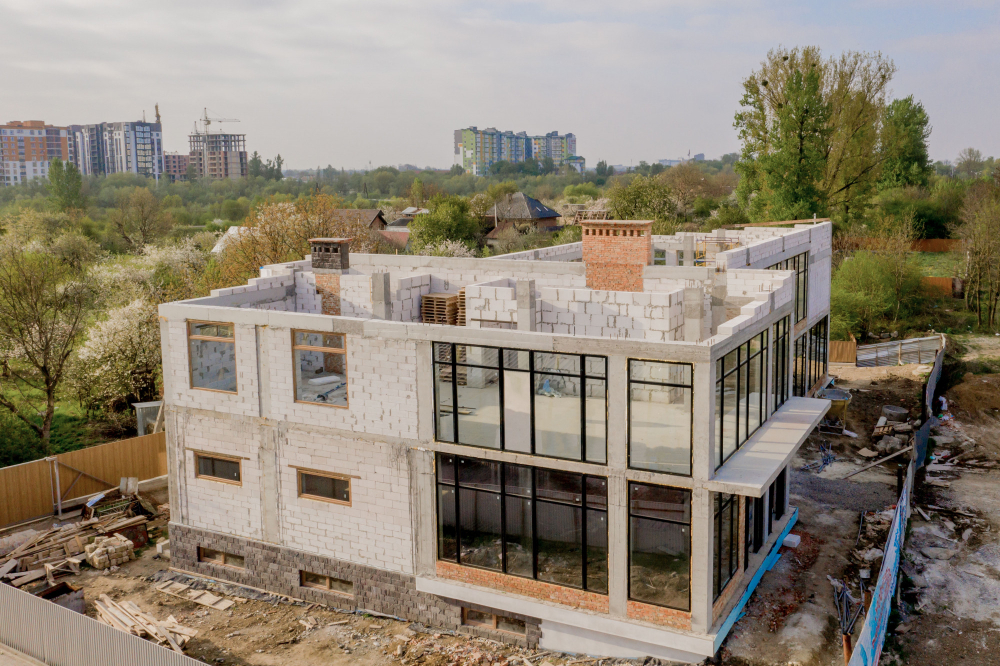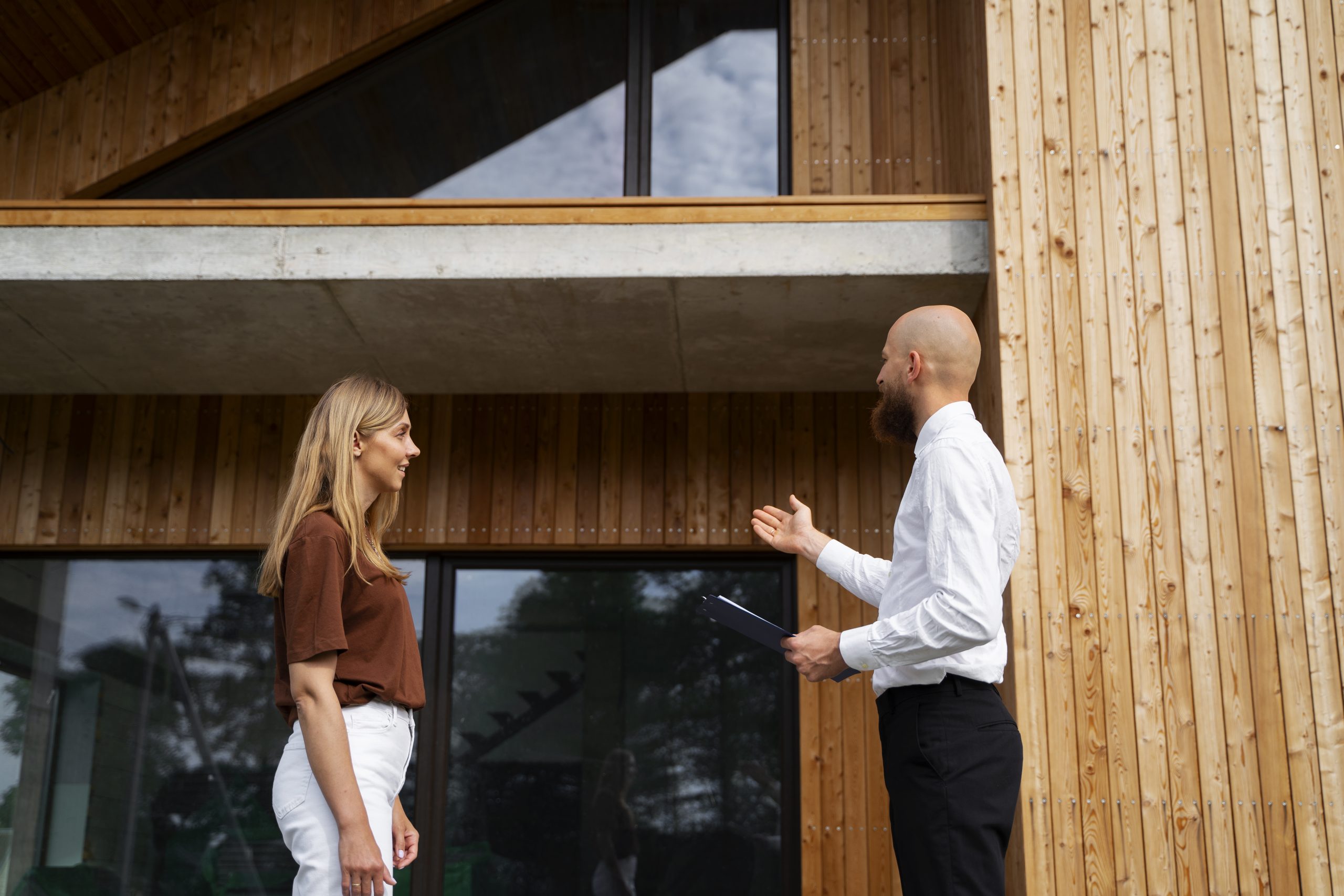Building a house extension can be an exciting yet complex project that requires careful planning, design, and execution. Whether you’re aiming to increase space for an expanding family, establish a home office, or extend your living areas, knowing the process is key to ensuring a smooth journey from start to finish. This guide will walk you through the key steps involved in building a house extension, including planning, budgeting, obtaining necessary permits, designing your new space, and managing the construction process. By the end, you’ll be equipped with the knowledge needed to undertake a successful extension project that enhances your home’s value and functionality.
What is a House Extension?
A house extension involves adding a new, attached structure to an existing home to create extra living space, such as an additional bedroom, a spacious kitchen, or a home office. These extensions can be single-storey, multi-storey, or even built over existing structures, making them a popular way to boost property value and get more living space without moving. Types of house extensions include:
Single-Storey Extension: A one-level addition to the ground floor, typically placed on the side or rear of the house, ideal for enlarging living areas or creating rooms like a utility room or home office.
Double-Storey Extension: Adding a new level on top of the existing building greatly increases usable space and property value.
Over-Structure Extension: Building an extra storey on top of a single-storey section of the house, such as a garage.
Loft Conversion: Transforming an attic or loft into a functional living area can be a significant change. It expands your home and allows you to utilise overlooked spaces, creating a warm, inviting area for your family.
Basement Conversion: Extending downward to create a new basement, providing extra living space beneath the existing structure.
Factors to Keep in Mind While Designing A House Extension
When planning to extend your home, consider a few key factors to ensure the project’s success. You will have to do meticulous planning and make selections that align with your personal style and financial plan. Here’s what to keep in mind:
Budget: Establish a realistic budget to guide your planning and decision-making regarding money. Include costs for construction, materials, and unexpected expenses. Keep in mind that the extension size influences the overall cost.
Size and Layout: Evaluate your existing space to determine the best location for the extension. Think about its intended use—whether it will be a spacious living area, a new bedroom, or a home office. Design the layout to optimise space and ensure it integrates smoothly with your existing setup.
Natural Light: Make sure your extension gets plenty of natural light. Think about your home’s orientation and sunlight during the day. Incorporate skylights, expansive windows, or doors to enhance natural light and create a seamless connection to the outdoors.
Future Use: Plan for the future by including energy-efficient features and flexible spaces that can change with your needs. This helps your extension stay functional and attractive over time.
By focusing on your budget, layout, light, and future needs, you can create a home extension that meets your current needs and adds value to your home for years to come.
Essential Steps for Building a House Extension
Assess Your Needs & What’s Possible
Start by carefully examining your property and deciding what you want to achieve. If you reside in an area with high population density, you might only be permitted to build a single-storey extension. If there’s more space between your home and your neighbours, a two-storey extension might be a suitable option. Be aware of rules that could limit your extension, like restrictions on height or limited outdoor space. If needed, you could also dig down to add a basement. Another option is to improve a specific part of your home, such as expanding your kitchen to make it larger and more functional.
Work Out Your Budget
The amount you should budget for your house extension can vary greatly depending on the project’s specifics. It largely depends on your goals for the extension and the condition of the existing home. Typically, work isn’t limited to just the extension itself; often, some modifications are necessary to bring the current house up to standard. When planning your extension budget, it’s essential to provide the designer with a detailed brief to clarify the construction tasks involved. Additionally, the age of your property might indicate the need for further upgrades, such as electrical systems and plumbing. If you’re renovating a historic property, you may also want to consider upgrading the insulation to meet modern living standards.
Do a Planning Search
Perform an online search to explore the surrounding area and identify potential options. Explore the local council websites for planning applications and other approvals, as they can offer useful insights into the local area requirements. Develop a comprehensive project brief that clearly outlines your requirements, budget, and timeline—serving as your project’s roadmap. Choose your project team and, if needed, carry out site investigations to lay strong foundations for your project’s success.
Prepare a Brief
Creating a brief will help you clearly outline your desires, preferences, and needs when working with potential architects. It should ideally be concise and comprehensive and include::
- Your budget
- Spatial requirements (number, size, and layout of rooms)
- Aspirational aspects (desired look and feel)
- A list of essential needs and preferred features
- Specific items required for the project
- A selection of images that inspire you
- Targeted starting and completion dates
Choose the Right Designer
To ensure smooth execution of your extension project, work with an architect or designer to develop your ideas and create detailed plans. In the UK, anyone can call themselves an architectural designer. However, only registered architects with the ARB can legally call themselves “architects.” Depending on your project’s size and budget, you might choose to work with an architect, an architectural technologist, or other qualified professionals.
Understand Statutory Requirements
When expanding your home, it is essential to consider relevant regulations, including planning permission and Building Regulations. Some extensions are allowed without permission, but bigger or sensitive-area projects might require approval. All extensions must follow building rules for safety and energy efficiency. Your architect can help, but understanding the basics early can prevent delays.
Carry Out Site Investigations
When creating a design for your extension, it’s crucial to take into account any site constraints that could affect the final plan. Your architect will evaluate factors such as:
- Underground drainage and sewer conditions
- Utility connections
- Trees on the property
- Access points to the site
- Flood risk assessments
- Legal restrictions, including covenants
- Potential effects on neighbouring properties
- Soil properties, depth, and the state of existing foundations through site investigations
Concept Design & Planning Permission
The architect will develop initial design concepts for your approval and refinement. As your project develops with sketches and visuals, so are the initial cost estimates. Subsequently, you will refine your selected concept to obtain planning permission.
Get a Measured Survey
Before beginning any design work, ensure you have a set of existing plans in place. These plans will serve as the foundation for all subsequent work, so accuracy is crucial. Your architect might create these plans themselves or hire a surveyor to do so on your behalf.
Create Initial Designs & Concepts
Collaborate closely with your selected designer to create concepts that align with your needs and harmonise with your current home. Here’s a chance to let your creativity shine and explore different options. Usually, an architect will create 2D sketches and 3D models of various designs. You can then compare these options to your original brief to determine which one best satisfies your requirements.
Develop a Preferred Design
Choose your preferred design and get it ready for planning permission, if needed. At this stage, known as ‘scheme design,’ you create CAD drawings that display the building’s floor plan, elevations, and sections, showcasing both its exterior and interior. Later, details like construction methods, layer build-ups, and connection points are added. Undertaking this approach helps prevent unnecessary work if the design goes over budget or doesn’t meet planning rules, which saves time and resources.
Don’t Forget the Garden Design
When designing an extension, the garden layout is often neglected, despite many extensions featuring extensive glass areas that offer stunning views and easy access to outdoor spaces. If your garden has minimal planting, think about how a new landscaping plan can enhance the extension’s aesthetic. For mature gardens, consider how the extension can integrate with and improve the existing plantings.
Consider Insulation & Sustainable Heating
Insulation and heating are often overlooked during the early stages of design. As they might need planning permission, it’s crucial to consider them from the outset. For example, adding insulation to external walls can alter the building’s appearance and may require approval from the relevant authorities.
Get an Outline Estimate
Before submitting your planning application, ask builders for a rough cost estimate to ensure your design fits your budget. You may also consider hiring a structural engineer to create a basic plan, which can help the builder provide a more accurate estimate, as structural work can significantly impact the total cost.
Consider a Two-Stage Tender
Usually, a builder is hired after the detailed design is finished. For extension projects, a two-step tender works well: first, ask builders for quotes during the design phase, then choose a preferred builder. After completing the technical design, finalise the build costs. Hiring a reliable builder early can help make the design process smoother and manage costs better.
Submit a Planning Application
If you need planning permission, your architect will handle the preparation and submission of the application for you. This process usually takes about 8 to 10 weeks, so you should plan accordingly. Even if your extension is permitted under permitted development rights, applying for a development certificate can provide you with additional peace of mind.
Technical Design & Building Regulations
After planning is done, detailed drawings and material lists are prepared to make sure everything meets Building Regulation rules. The architect will walk you through the technical details to get you ready for construction process.
Appoint a Structural Engineer
For most extensions, it’s crucial to consult a structural engineer. They’ll assess what’s needed to support the building and help design the necessary structural components. It’s best to hire them before finalising your design for planning permission. This can also help you get a more accurate idea of the costs, especially for complicated extension projects.
Prepare Technical Plans
After securing planning approval, the next step is to develop the specifics of your project. Your architect will create comprehensive technical drawings, specifications, and schedules, resulting in a thorough set of documentation:
- Comprehensive plans, including elevations, sections, and construction details.
- Written specifications.
- Structural design drawings, calculations, and specifications.
- Kitchen and bathroom layouts, including drainage runs.
- Schedule of interior fixtures, fittings, and finishes.
- Heating and electrical plans.
- Details of specialised installations, such as glazing.
- Landscaping and planting plans.
- Schedule of works.
Completing all project design elements beforehand helps avoid delays and extra costs caused by a lack of detail during on-site work.
Obtain Building Regulations Approval
When building an extension, you must ensure compliance with Building Regulations, regardless of its size or whether you need planning permission. These rules include new construction and basic elements like foundations, doors, windows, drainage, electrical systems, walls, kitchens, and bathrooms. Fire safety is essential for multi-storey extensions. Typically, you’ll need a structural engineer’s calculations, which can be included as part of your application. For bigger projects, it’s better to submit a Full Plans Application so your design can be approved before building construction starts.
You should inform the local authority at each stage of your project. Not doing so may mean your work has to be inspected, fixed, or removed if it doesn’t meet regulations. Hiring an experienced builder helps, as they are familiar with the current rules, can guide you through the application process, and arrange inspections. They also make sure the work gets done successfully and correctly.
Your extension plans need approval for Building Regulations to ensure they meet standards for insulation, ventilation, fire safety, and more. You have two main options:
Building Notice: A faster, flexible process where you inform the local authority, and they inspect the work as it happens. This suits smaller, simpler projects.
Complete Plans: You submit detailed plans before starting construction. This option is more comprehensive and suited to larger or more complex extensions. Though it may take longer initially, it can make the building process smoother.
Obtain Other Consents
When planning an extension, you may need some approvals. If your extension impacts a shared wall or boundary with your neighbours, you’ll need a Party Wall Agreement. It’s essential to notify your neighbours at least two months before starting work. You may also require a Party Wall Surveyor to oversee the process. If your work is near or over a public sewer, you need a Build Over Licence. Send plans to your water authority and follow their rules. Getting approvals early can prevent delays and legal issues.
Source Products and Suppliers
An extension project involves choosing many items, which can make it hard to know all the supplies and installations needed before starting. Start by focusing on the most critical items first, such as windows (glazing), kitchen stuff (units, appliances, taps, worktops), bathroom items (sanitaryware, tiles, fixtures), heating, flooring, doors, storage, lighting, and fittings. Then, add other items like electrical fittings, lighting fixtures, shelves, hardware, and furniture. Make sure you’re clear on who provides each item — either you or the builder. For key or expensive items, such as windows or those required to meet deadlines, it’s best to have the builder supply and install them. This way, you’re protected from delays or problems.
Prepare a Schedule of Work
What is a schedule of works? It’s a detailed list that accompanies your project drawings and specifications. This lists all the tasks, materials, and labour required for the project. It helps builders provide accurate estimates and ensures everyone is aware of the project’s scope. Having a schedule simplifies the process of comparing quotes and helps prevent surprises. Without one, you’re dependent on builders to set their prices, which can make comparisons more difficult.
Find a Builder
If you’re working with an architect, they can recommend reliable builders they’ve worked with before. It’s essential to check that the company you’ve chosen has the right insurance in place and ask for references from past clients. A reputable builder will be more than happy to provide these.
Tender the Works
Sending out a tender involves contacting your chosen builders and providing them with drawings, specifications, and a schedule of works. Typically, the schedule of works is shared as a live document, such as an Excel file, for each builder to work on. You might get questions asking for clarification on specific points. This is usually a good sign that the builder is actively engaged with your project details.
Analyse Tenders
Comparing tenders can be complex, so consider enlisting your architect’s help to understand the differences. When reviewing tenders, focus not only on the total cost, but also on the overall value. Examine the cost breakdown—has everything been included?—the proposed timeline, and the approach of each contractor towards the project. These aspects are all crucial.
Select a Builder and Agree on a Final Price
Select a builder and discuss the associated costs in detail. If it’s too expensive, consider modifying the design, reducing details, or completing the project in stages to save money. Having a detailed plan makes it easier to understand your costs clearly and explore ways to manage them effectively and explore potential saving options.
Sign a Building Contract
A building contract is an agreement between you and the builder that outlines the project cost, the work to be done, payment plans, and deadlines. It should also include a backup plan for problems like work not meeting standards or delays. Essential documents for the contract include drawings, schedules, and specifications. The JCT Minor Works contract is suitable for many home extension projects, but larger or more complex renovations might need the JCT Intermediate.
Arrange Building Insurance
Your standard building insurance may not cover the construction work, so it’s essential to contact your provider beforehand to prevent your policy from becoming invalid. During renovation, get specialist insurance for theft, damage, and weather issues. Also, check your builder’s coverage, including public liability, employer’s liability, and contract works insurance.
The Construction Phase
Once you’re ready, start building. If you’ve planned well, it should go smoothly. If you have an architect, they can oversee the work to make sure it complies with the plans. If not, you’ll need to trust your builder to finish the job.
Prepare Your Home for Construction
Clear the work area of your home and plan how you’ll manage daily life activities during the project. You might want to consider setting up a temporary kitchen or looking for other lodging options, especially during disruptive phases.
Manage the Construction Work
Supervising the building process is crucial to ensure it adheres to the plans. Visit the site often and talk to your builder to find and fix problems early. Watch the costs and progress closely. If you have a building contract, it usually has a payment plan based on key milestones. If something seems wrong, speak up. Fixing issues early is easier than after the project is finished.
The Building Works
Here’s a standard sequence for building an extension:
- Site preparation and excavation
- Laying foundations
- Installing the damp proof course and floor slab
- Constructing walls and the roof framework
- Completing first fix work (electrics, plumbing, etc.)
- Performing plastering and flooring
- Carrying out second fix work (fitting bathrooms, kitchens, etc.)
- Applying decoration and finishing touches
Keep in mind that each project is unique, so your extension might follow a slightly different order based on its specific requirements.
Completion & Snagging
As your extension is nearly finished, here are the final steps:
- Schedule inspections with the building inspector and your architect if involved.
- Make a list of minor issues like touch-ups, door or window fixes, minor plumbing or electrical problems, and uneven surfaces. Collaborate with your builder to resolve these issues promptly.
- Gather essential documents such as the building completion certificate, safety certificates, warranties, and planning permission approval if needed.
- When everything looks good and you have all the documents, pay the builder.
If your contract is under a JCT agreement, 2.5-5% of the final payment may be retained for 6 or 12 months to rectify any issues that may arise.
Time to Settle In
Your extension is complete, and now you can enjoy your new space. You may need to rearrange furniture or organise storage to maximise the functionality of your space. Think about creating a maintenance plan, which could include regular checks on gutters and new systems like underfloor heating or air conditioning. Monitor your energy consumption to keep everything running smoothly.
Making Your Extension a Success
Follow this guide to handle your house extension project efficiently and swiftly. Remember, careful planning and clear communication are essential for a smooth build. With patience, effort, and attention to detail, you can create a quality extension that makes your home better and your life easier.



